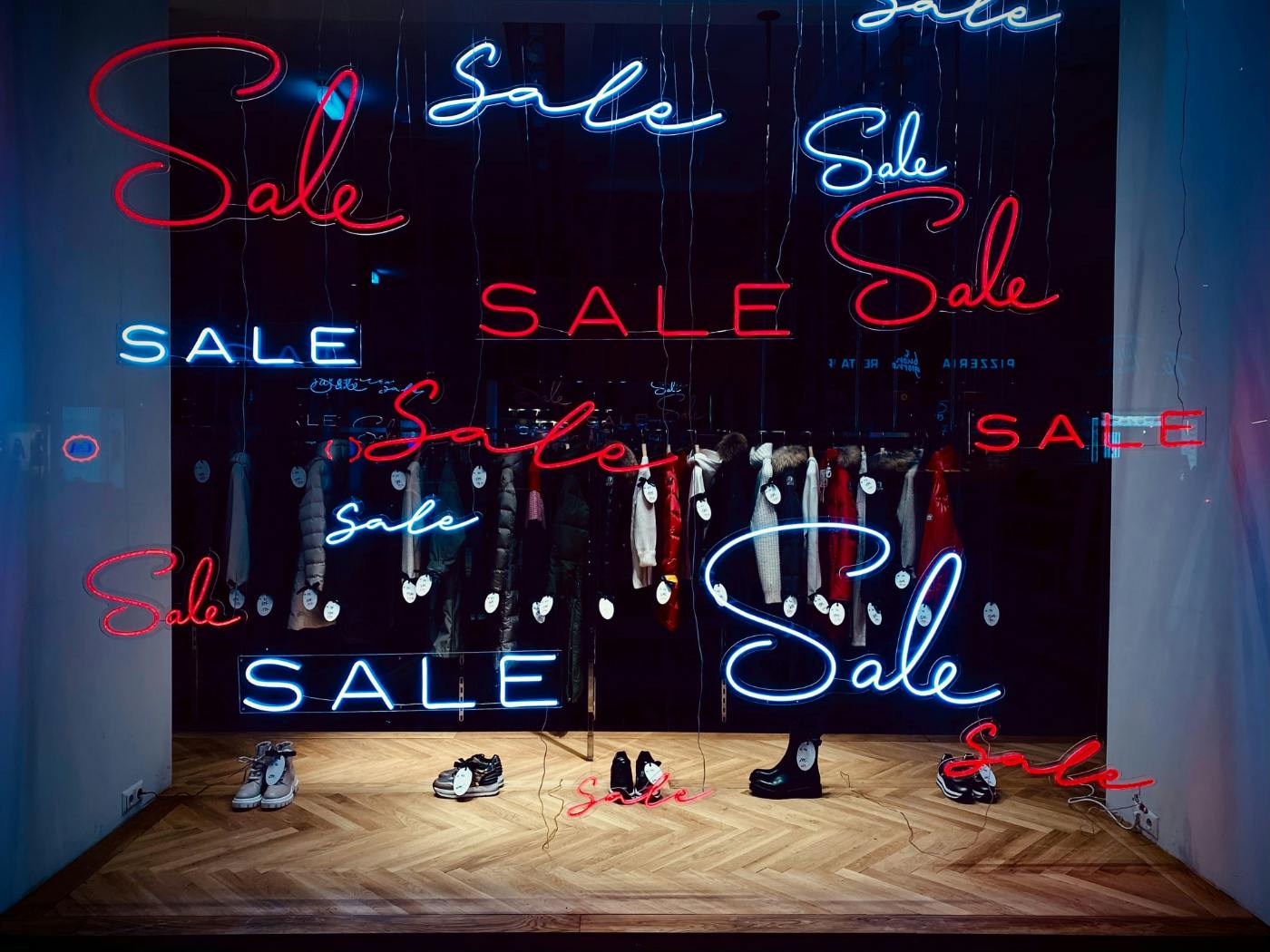

For years, branding has focused on the path to purchase. Funnels, awareness campaigns, consideration stages—all roads leading to the golden moment of conversion. But here’s the truth: the buy isn’t the end of the story. It’s the beginning of the relationship.
Growing up, I spent the summers in a little family-owned cottage in Marshfield, Massachusetts. The cottage was snug and peaceful, it was literally a one-minute walk to Sunrise Beach, and it was the perfect summer retreat. My father stayed home and worked, then joined us on the weekends. So, most of the summer time it was my mom, brother, and me. I loved it. Heading to the beach at the crack or dawn, staying there all day, coming home from dinner, putting Noxima on our sunburns and night time walks on the beach down tot he town cewnter and Bud’s, a bait/tackle/rent a boat, but some rope sort of store that also had a wall of baskets that held actual penny candy.
The summers were perfect, and the highlight was the Marshfield Faire. A big, exciting faire that had everything from rides and games to actual horse racing. We looked forward all summer to the faire. My dad would come down on Friday night, and then, Saturday morning, off we went to spend the whole day, into the night at the faire.
We waited the whole summer for August. Everywhere we went, there were signs and posters hawking fair tickets and advertising acts and shows, livestock, and race horses. The buildup was amazing, and all you thought about for the weeks before was the fire. The food, the attractions, the possibilities. It was all so exciting. And then, it was over.
When summer vacation was over, Dad would come, we’d pack the car, and off we’d go home again. As we headed home, we’d pass the fairgrounds, now empty of sound and sights, animals and foods. An empty lot. A grass patch waiting to have a purpose. All the hype, all the excitement, and the anticipation were gone, and I thought, “Now what?” It was over, the much-anticipated highlight of summer was over, and for me, that was depressing. All the build-up and one day later, it’s all done. I always found that endings, especially when the event was so hyped, were a bummer. People worked os hard to get my ear, to get my eyes and my presence at the faire, and then, who cares. Go, live your stupid life and maybe, just maybe, we’ll entice you back next season.
I put my time and excitement into this thing, and they didn’t even follow through. No, come back next year and see this, or, next year, expect to have more than that. Nope, just hey, you bought a ticket, great, see ya. It felt like a store that spends big money to get you in for the sale, and then, who cares? I always thought there should be more.
So, is there?
I didn’t have the language for it then, but looking back now, I see it clearly: the buildup was brilliant, the experience was immersive, but the aftermath was empty. No closure, no continuation, no relationship—just silence. And as a kid, I felt that drop. As a strategist, I now recognize it as the critical moment most brands ignore: what happens after the transaction.
They pour time and money into getting our attention. They build the buzz, deliver the sale, and then vanish, like the fairgrounds after Labor Day. But here's the question: what if they didn’t? What if the story didn’t end at the buy?
That’s what we’re exploring today. Because in the most human, brand-redefining way possible, branding doesn’t stop at the sale—it begins again.

Why Branding Doesn’t Stop at the Sale
For years, branding has focused on the path to purchase. Funnels, awareness campaigns, consideration stages—all roads leading to the golden moment of conversion. That’s where the metrics spike, the dashboards light up, and the marketing team high-fives itself.
But here’s the truth: the buy isn’t the end of the story. It’s the beginning of the relationship.
In a world where customer acquisition costs are soaring and attention is harder than ever to hold, the most undervalued brand real estate is the moment after the sale. Because that’s when the customer is most emotionally available. Most hopeful. Most open to connection.
And yet, most brands disappear. No narrative, no continuity, no emotional reinforcement. Just an order confirmation and, maybe, a shipping email. The brand energy vanishes the moment the credit card clears.
This is the narrative drop-off.
And it’s a missed opportunity of massive proportions. Because in that post-purchase window, customers are asking questions—silently, but powerfully:
- Was this worth it?
- Do I feel seen?
- Is this a brand I want to stay with, or just buy from?
Brands that don’t answer those questions leave the customer adrift. Brands that do? They build something stickier than satisfaction. They build trust. Affinity. Loyalty.
And when they don’t—when they drop the thread right after the sale—there’s more at stake than just a missed opportunity.
There’s a slow erosion of connection. A quiet exit. A chance lost not once, but forever.
The Risk of Silence: What Happens When the Story Stops
When a brand goes quiet after the sale, the customer doesn’t simply move on with a satisfied glow. More often than not, they begin to drift—emotionally, cognitively, and ultimately, behaviorally.
It doesn’t happen all at once. There’s no dramatic break-up. Just a gradual cooling. The brand that once felt vivid and exciting begins to fade. The connection thins. The story dissolves.
This isn’t about bad service or faulty products. It’s about an absence of intentionality. A vacuum where meaning should be. Customers don’t just want a product that works. They want to feel like their choice still matters after they’ve made it.
And in the absence of a post-purchase story, other narratives rush in to fill the void:
- Indifference: “I guess they got what they wanted from me.”
- Regret: “Maybe this wasn’t the right brand for me.”
- Detachment: “I don’t really remember who I bought this from.”
This is how one-time buyers stay that way. It’s how price becomes the only differentiator. It’s how brands lose not just repeat business, but relevance.
Worse still, the silence after the sale can undercut everything that came before it. No matter how brilliant the campaign, how beautiful the unboxing, how delightful the onboarding—if the brand doesn’t continue the relationship, the experience collapses into a transaction.
And that’s the real risk: reducing a brand to a commodity, just another product on a shelf, forgotten as fast as it was acquired.
So the question becomes: what does it look like when a brand doesn't stop at the sale? When it builds its strongest story after the buy?
Let’s look at what that post-purchase narrative can and should become.

What Post-Purchase Narrative Actually Looks Like
A strong post-purchase narrative doesn’t try to resell the product. It reinforces the choice. It deepens the emotional logic of the purchase. It says to the customer, “You didn’t just buy something—you joined something.”
This kind of storytelling isn’t about marketing touchpoints. It’s about meaning. It’s about crafting a thread that continues long after the transaction has ended.
Here’s what that looks like in practice:
1. Affirmation
The moment after a purchase is full of doubt, even if it’s fleeting. Did I make the right choice? Was this worth it? Smart brands don’t wait for a return request. They preempt it with warmth, clarity, and reassurance. A well-timed message, a thank-you note that feels personal, or content that reinforces the value of what was just bought—it makes the buyer feel smart, not sold.
2. Orientation
What happens now? How do I get the most from this? A strong post-purchase story orients the customer, whether through onboarding emails, how-to videos, or a simple, well-designed welcome message. This isn’t just customer service. It’s narrative continuity.
3. Inclusion
Post-purchase is the perfect moment to shift the customer’s role from consumer to participant. Invite them into a community. Ask for their input. Show them how others are using what they just bought. Make them part of something bigger than the receipt.
4. Progression
This is the long arc. What’s next for this customer—not as a sales target, but as a character in your brand’s world? What’s the next chapter, the next aspiration, the next shared goal? Movement-oriented brands build long-term connection by giving customers a sense of progression, not just repeat purchase.
These are not add-ons. They’re not “nice-to-haves.” They’re the continuation of the relationship the brand worked so hard to earn.
Because when you design the post-purchase experience with the same care as the pre-sale pitch, something happens: trust compounds. Loyalty grows. And advocacy becomes effortless.
Let’s ground this in some real-world brands getting it right.
Brands Getting Post-Purchase Right
Plenty of brands know how to launch a customer journey. But far fewer know how to sustain one. The following examples show how post-purchase narrative can be used not just to retain customers, but to transform them into advocates, participants, and believers.
Glossier
Glossier doesn’t just send you makeup. They send you a mirror. Post-purchase emails aren’t filled with upsells—they’re filled with affirmation and inclusion: real customer photos, how-to content, and subtle invitations to join the larger “you’re one of us now” energy. The message is clear: your purchase is the beginning of belonging, not the end of a checkout.
Who Gives A Crap
This toilet paper brand turns a deeply unsexy product into an ongoing story about global sanitation and social impact. After purchase, customers get follow-ups that aren't about product features—they're about the mission their money supported. It's quirky, educational, and anchored in shared belief. The product keeps you stocked. The narrative keeps you aligned.
Liquid Death
What should be a one-and-done novelty becomes something else entirely. Post-purchase, you’re not just thanked—you’re inducted. You’re invited to “sell your soul” (literally), join the brand’s cultish mailing list, and become part of its chaotic mission to kill plastic pollution. The narrative doesn’t end when the water’s gone—it’s just getting started.
Patagonia ...
Come Here for a Second, So the Other Brands Can't Hear Us—Let’s Talk Patagonia
Yes, we know. Everyone talks about Patagonia. We use them all the time as an example of a brand getting it right.
And there's a reason: they actually deserve it.
They don’t just tell a story. They live it. When you buy something from Patagonia, the post-purchase experience isn't about maintaining brand awareness—it’s about reinforcing your own identity. Every email, every repair program, every bit of packaging reminds you that you're aligned with something bigger than yourself. You're not just wearing a jacket. You're declaring values.
We keep referencing them not because they’re cool, but because they treat the post-purchase moment with reverence. They don’t disappear. They deepen. They remind you, in a dozen subtle ways, that your choice wasn’t just smart—it was right.
Patagonia shows us what it looks like when the transaction is the beginning of the commitment, not the reward for a successful funnel.
That’s why we keep bringing them up. Now, back to the others.
Allbirds
Allbirds doesn’t bombard you with post-purchase emails begging for reviews or pushing promotions. Instead, they tell you what’s next. They show you how to care for your shoes. They explain the sustainability behind the materials you’re wearing. And they occasionally check in—not to sell, but to share. The post-purchase cadence feels more like a conversation than a campaign. It’s patient. It’s intentional. And it builds something rare: long-term, low-pressure trust.
These brands don’t just continue the conversation after the sale—they evolve it. They understand that trust isn’t built at checkout. It’s built in the quiet moments that follow.
So, how do you do that with intention? How do you architect a brand experience that deepens loyalty instead of dropping off?
Let’s break it down.

How to Design for Loyalty, Not Just Conversion
Loyalty doesn’t come from a points program or a discount code. It comes from meaning, momentum, and memory. Designing a post-purchase experience that fosters loyalty means thinking beyond “What do we want them to do next?” and instead asking, “How do we want them to feel now?”
Here’s how to build a lasting connection:
1. Reaffirm the Choice
The moment after purchase is when the customer’s belief in your brand is most fragile. This is where reassurance matters most—not in a scripted way, but in a real, human tone. A simple message that says, “You made a good call. Here’s why,” backed by story, not sales tactics, can reinforce trust when it’s most vulnerable.
2. Create a Story Arc
Treat the post-purchase experience like the next chapter in a story. What journey is the customer now part of? What transformation are they stepping into? Whether it’s onboarding, education, or inspiration, this is where you give them a reason to stay engaged, not just informed.
3. Design for Momentum, Not Just Messaging
Too many brands rely on a post-purchase drip campaign as a to-do list. The real goal is to create momentum. Every email, every package insert, every message should build toward something: a stronger relationship, a new behavior, a sense of belonging. Drips are for campaigns. Momentum is for movements.
4. Invite Reflection and Participation
Ask the customer to share—not just reviews, but their experience, their story, their perspective. Create space for them to see themselves in the brand, and to see the brand as responsive. When people feel heard, they stick around.
5. Stay Emotionally Consistent
If your pre-purchase experience is bold, confident, and full of purpose, don’t let the tone drop to robotic utility afterward. Consistency of emotion is key. The story that got them to buy should carry through every interaction that follows.
6. Let the Brand Grow With the Customer
Loyalty isn’t about repetition—it’s about evolution. Keep the customer relationship alive by offering new ways to engage, new shared values to support, or new chapters of your brand’s mission they can be part of. Not everyone needs to buy again next week, but they should still feel like they belong next month.
When brands approach post-purchase with this kind of intentionality, they don’t just build retention—they build a relationship. The kind that’s hard to copy, and even harder to walk away from.
Summing Up: The Relationship Begins Where the Funnel Ends
For too long, branding has been obsessed with the chase—capturing attention, driving conversion, and sealing the deal. But the real work of brand-building starts after the buy. That’s where trust is tested. That’s where stories either deepen or disappear.
The brands that thrive today understand this. They treat the post-purchase moment not as an afterthought, but as a sacred opportunity. A chance to affirm, include, evolve, and connect.
Because when the funnel ends, the relationship should begin.
At ThoughtLab, we believe loyalty isn’t a tactic. It’s a narrative. One that starts not with a headline or an offer, but with a follow-through. With a brand that shows up after the sale and keeps showing up, not to sell again, but to matter more.
That’s branding beyond the buy.
